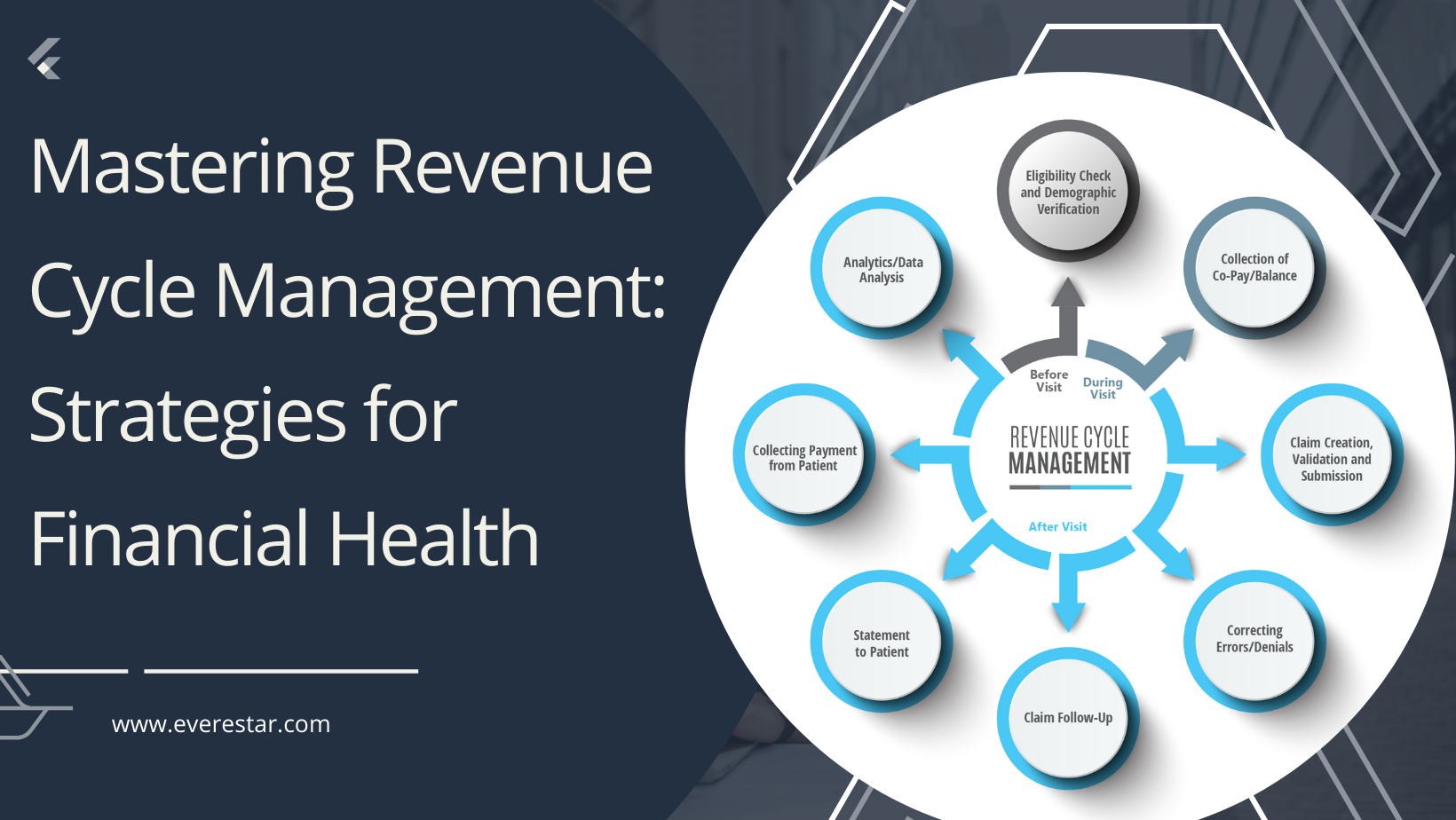In the intricate world of healthcare and service industries, managing revenue effectively is paramount for sustaining operations and ensuring financial health. Revenue Cycle Management (RCM) serves as the cornerstone of this endeavor, encompassing a series of critical processes aimed at optimizing revenue generation and cash flow. In this comprehensive guide, we delve into the nuances of RCM strategy, exploring key components, challenges, and best practices to help businesses navigate the complexities of revenue management successfully.
Understanding the Revenue Cycle
The revenue cycle encompasses a series of interconnected stages, each crucial for the seamless flow of financial transactions within an organization. From patient registration and insurance verification to charge capture, claims submission, payment posting, denial management, and patient collections, every step plays a pivotal role in driving revenue optimization and operational efficiency.
Challenges in Revenue Cycle Management
Despite its significance, revenue cycle management is fraught with challenges that can impede financial performance and strain operational resources. Common obstacles include billing errors, coding inaccuracies, claim denials, regulatory compliance complexities, and the intricacies of dealing with various payers. Addressing these challenges requires a strategic approach and proactive measures to streamline processes and mitigate risks effectively.
Key Components of an Effective RCM Strategy
To master revenue cycle management, organizations must adopt a holistic approach encompassing various key components:
Patient Registration and Eligibility Verification: Accurate data collection and insurance verification are essential to prevent billing errors and ensure timely reimbursement.
Charge Capture and Coding: Proper charge capture and medical coding practices are critical for maximizing revenue potential and minimizing compliance risks.
Claims Submission and Follow-Up: Streamlining claims submission processes and implementing robust follow-up procedures help expedite reimbursement and reduce revenue leakage.
Payment Posting and Reconciliation: Prompt payment posting and meticulous account reconciliation are vital for maintaining financial accuracy and transparency.
Denial Management and Appeals: Identifying denial trends, appealing denied claims, and implementing corrective measures are essential for minimizing revenue loss and optimizing reimbursement.
Patient Collections: Implementing patient-friendly payment options, offering financial assistance programs, and leveraging technology for online payments can enhance patient collections and reduce bad debt.
Technology in RCM
Advancements in technology have revolutionized revenue cycle management, offering innovative solutions to streamline processes, enhance accuracy, and improve overall efficiency. Revenue cycle management software, electronic health records (EHR) systems, and artificial intelligence-powered analytics tools empower organizations to automate tasks, identify revenue opportunities, and proactively address potential issues.
Compliance and Regulatory Considerations
Staying abreast of evolving healthcare regulations, such as the Health Insurance Portability and Accountability Act (HIPAA), is imperative for maintaining compliance and mitigating regulatory risks. Organizations must implement robust policies and procedures to ensure adherence to regulatory requirements, safeguard patient data, and uphold ethical standards in revenue cycle management practices.
Key Performance Indicators (KPIs)
Monitoring key performance indicators (KPIs) is essential for evaluating revenue cycle performance, identifying areas for improvement, and measuring success. Metrics such as days in accounts receivable (AR), denial rate, clean claim rate, and collection rate offer valuable insights into the efficiency and effectiveness of RCM processes, enabling organizations to make informed decisions and drive continuous improvement.
Future Trends in RCM
Looking ahead, emerging trends such as predictive analytics, artificial intelligence, and value-based care models are poised to reshape the landscape of revenue cycle management. By embracing innovation and embracing evolving technologies, organizations can position themselves for long-term success and navigate the complexities of healthcare finance with confidence.
Conclusion
In conclusion, mastering revenue cycle management requires a strategic and multifaceted approach encompassing various components, including process optimization, technology integration, compliance adherence, and performance monitoring. By implementing best practices, leveraging technology, and staying informed about industry trends, organizations can enhance financial sustainability, improve operational efficiency, and achieve greater success in revenue generation and cash flow management.


